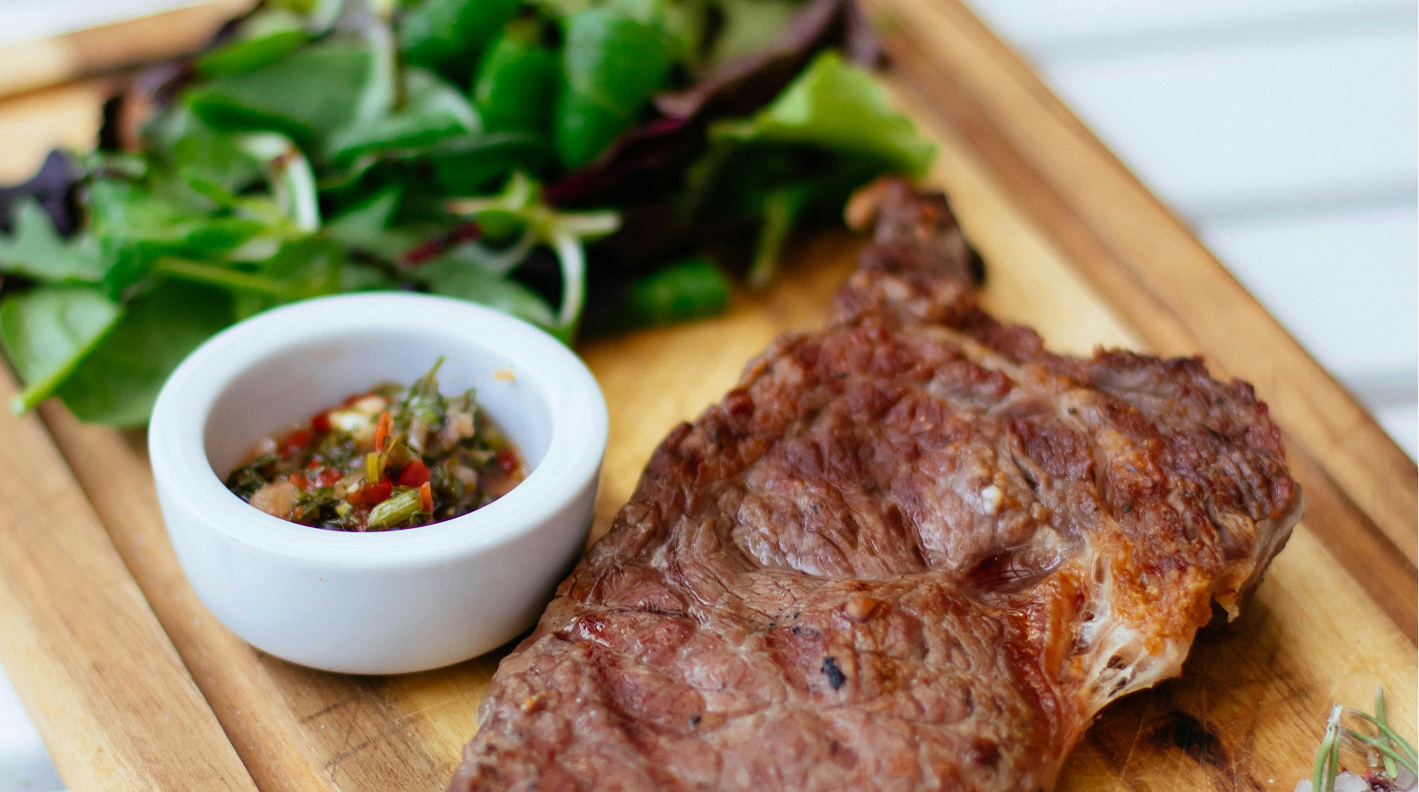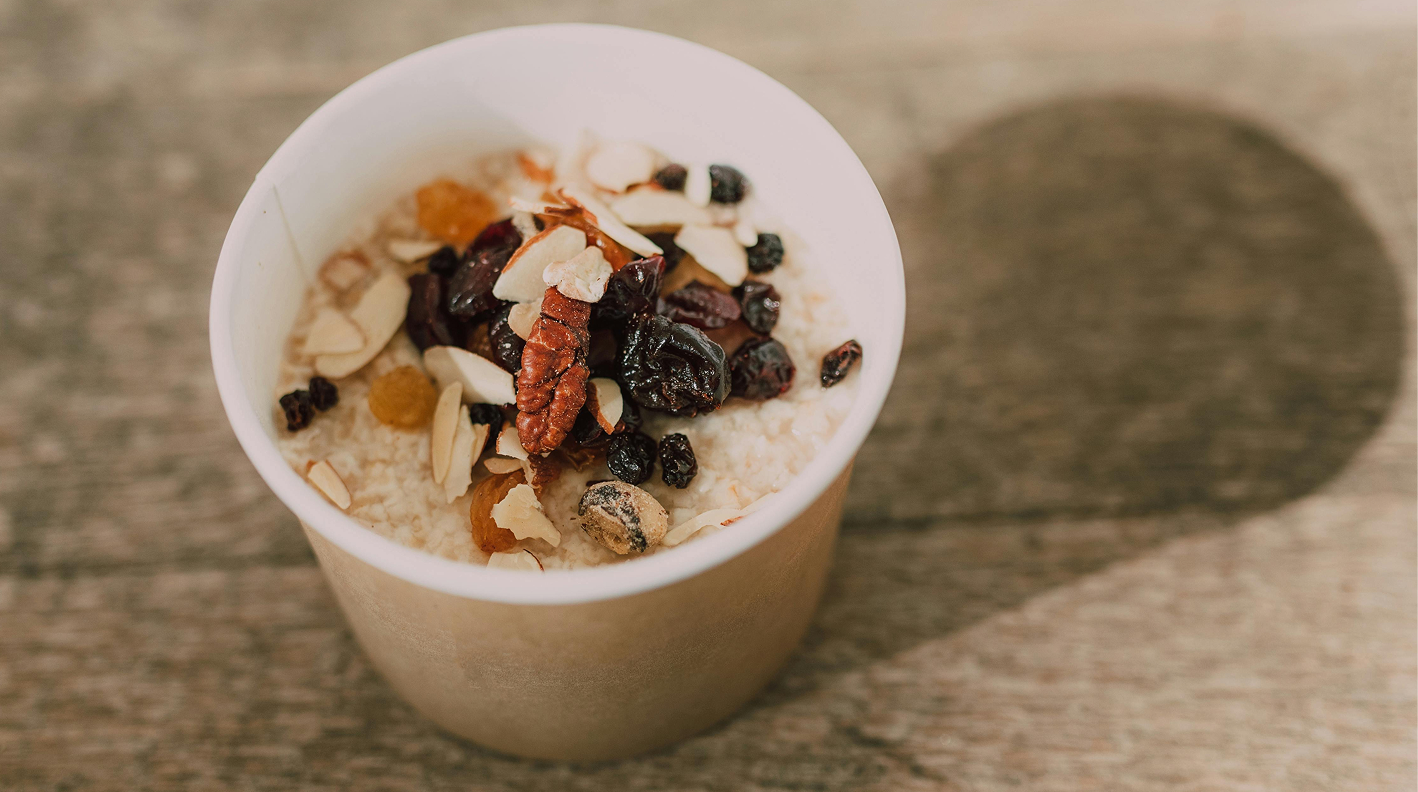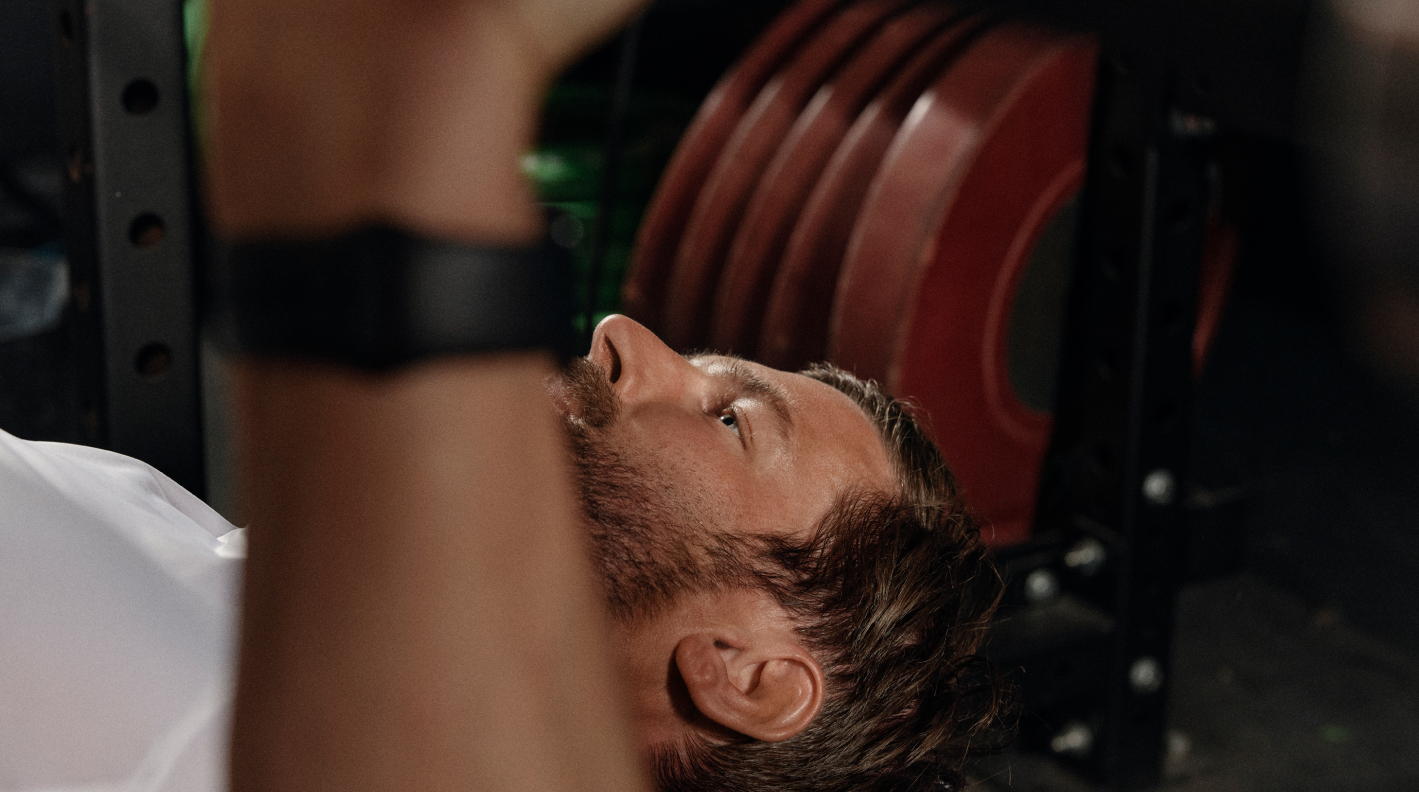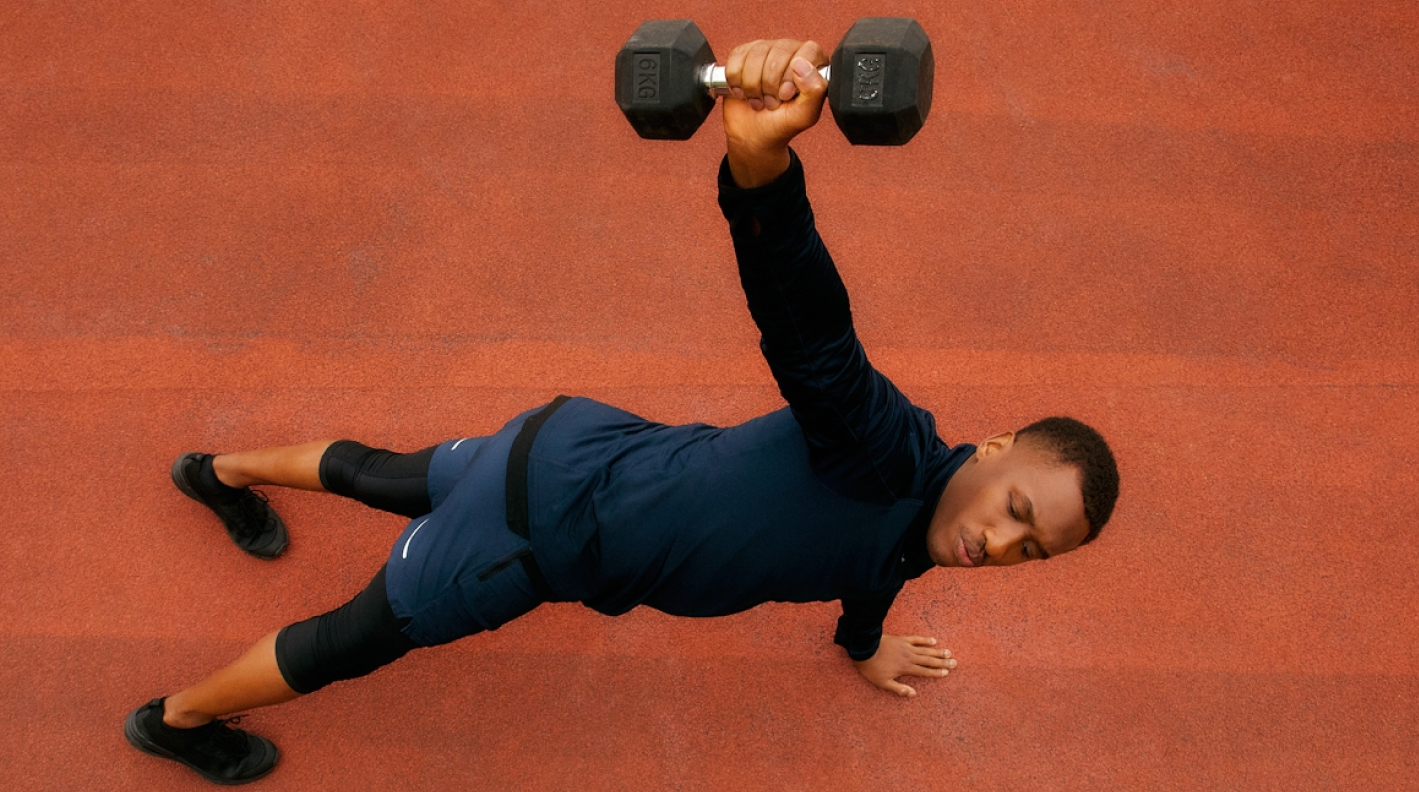Fat vs muscle: The science behind body composition
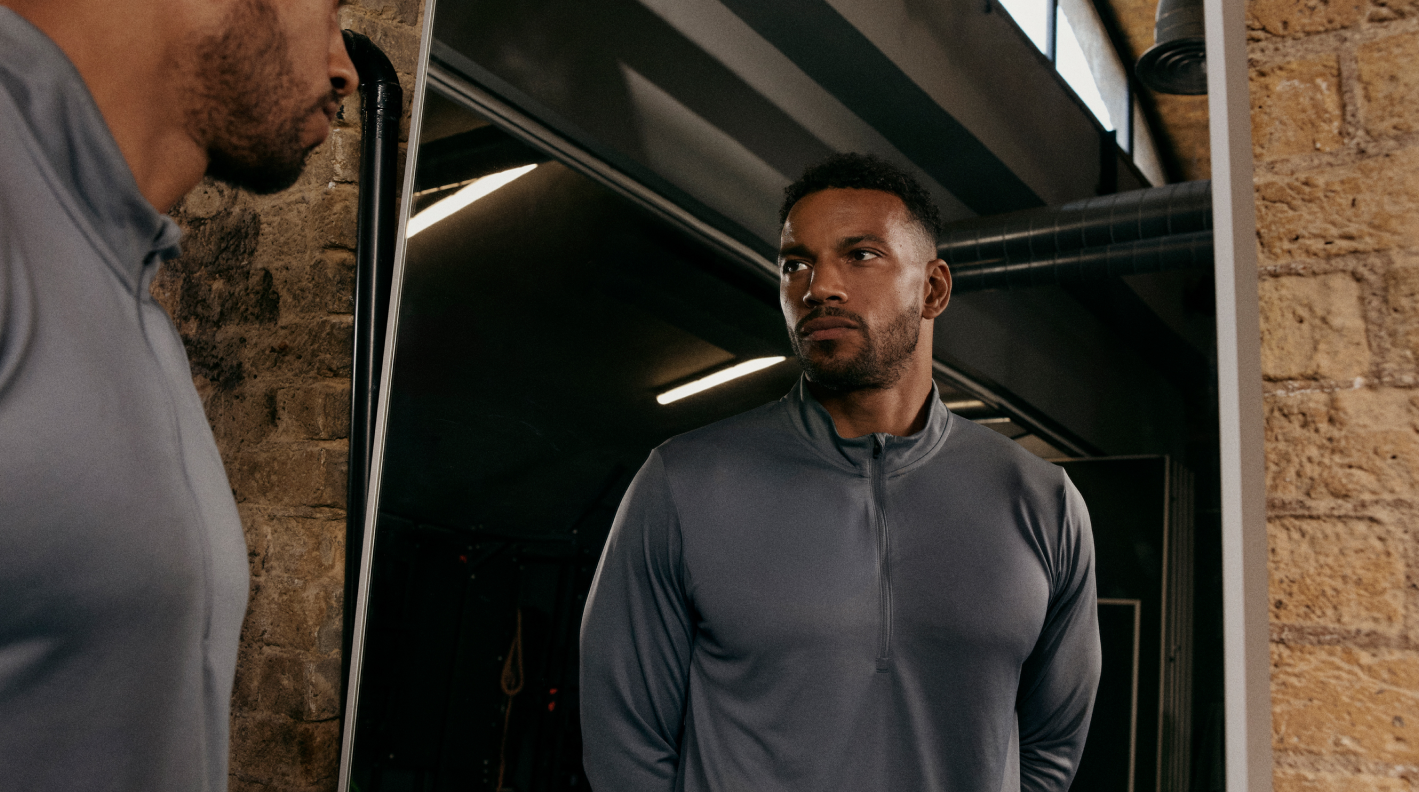
Key takeaways
- Fat provides energy, regulates hormones, and protects organs, but excess fat, particularly visceral fat, increases health risks. Muscle supports movement, strength, and metabolic efficiency, aiding in a leaner, healthier appearance.
- Muscle is denser than fat, taking up less space in the body for the same weight. Measuring body fat percentage, rather than relying solely on weight or BMI, gives a clearer picture of health and fitness progress.
- Focus on high-protein foods for muscle repair, engage in resistance training to build muscle, and ensure adequate calorie intake to support energy and recovery. Use consistent methods to track progress, such as body fat measurements or performance metrics.
There's nothing worse than when you've been hitting the gym consistently, getting in your daily steps, and hitting your protein targets — only for the number on the scale to stay stagnant or worse yet, go up.
But, before you throw in the towel and consider your new health routine a flop, consider this — you could be in the process of changing your body composition for the better.
You've likely heard the expression 'muscle weighs more than fat'.
In the article, we delve into whether there's any truth to this, and what this means for the concept of BMI. We also share practical advice for building your muscle mass while reducing body fat, to help achieve that lean, healthy body that proudly proclaims "Yes, I work out."
What is fat?
Body fat refers to the fatty tissue inside your body that doesn't contain any muscle mass, electrolytes, or body fluid [1]. Known scientifically as 'adipose tissue,' this can be white, yellow, brown, beige or pink [2].
While fat has (unfortunately) become a bit of a dirty word, it actually plays a crucial role in our overall health.
Not only does it provide a protective coating to all of our organs, muscles, and the central nervous system, but it's our energy provider — fuelling us when we don't have food in our reserve [3]. Fats and lipids also help to regulate some of our hormones, such as steroid hormones.
We all need some fat to function, but not all types are created equal. Fat can be stored in several ways, each serving a different purpose.
There's the essential fat in our brain, nerves, and membranes which is — you guessed it — essential for our daily functioning. [4].
Meanwhile, subcutaneous fat is the pinchable skin under the surface that stores energy for later use. Finally, visceral fat — also known as belly fat — is the fat in the abdomen around the major organs, which can be dangerous to your health in high amounts.
We all have a combination of these different fat types, to varying degrees.
However, when we have an excess of it, it can increase the risk of health issues such as heart disease, stroke, type 2 diabetes, and certain types of cancer [5]. A high body fat percentage also contributes to that softer, 'fluffier' look that many of us seek to lose.
What is muscle?
The other crucial part of the body composition puzzle is muscle. These are the soft tissues in our body that work with the bones, tendons, and ligaments to support movement in the body [6].
We have more than 600 muscles in the body, with the 3 main types being skeletal, smooth, and cardiac [6]. They do everything from pumping blood to the rest of our body to helping you carry those bags of grocery shopping from the car.
Not only is muscle mass essential for health, mobility, and longevity, but it also helps to create a lean, strong, and toned appearance.
We all have roughly the same amount of muscles, and while nobody is born 'naturally' muscular, there can be genetic differences in the shape and size.
For example, some people have more fast twitch muscles that support powerful, explosive movements (and a strong, defined look), while others have more slow twitch muscles that make them great for endurance sports like marathon running [7].
The good news, no matter where you sit, it's possible to actively grow your muscles through a process called muscle hypertrophy [8].
This is when you put a strain on the muscles (usually through resistance training), creating tiny tears in them. By consuming plenty of protein, you can then repair and replace the fibres — leading to muscle growth.
Fat vs muscle: How do they impact your weight?
In the medical community, body mass index (BMI) is the most common method for measuring weight and the associated health risks.
However, the BMI is not able to distinguish between fat and muscle, making it quite inaccurate for some people. For example, because professional athletes and weightlifters tend to have a lot of muscle, BMI can categorise them as overweight or obese even though they're in great shape.
For this reason, many people who are serious about health and fitness choose to also monitor their body fat percentage.
This is a measurement of how much of your weight is made up of fat, compared to lean tissue, like bones and muscle. This can give you a much better big-picture view of your body composition, and whether your goal should be to build muscle, lose fat, or both.
By measuring your muscle-to-fat ratio, you can get an idea of your body's overall lean muscle mass.
Whether you get this professionally measured or use a body fat scale at home, this will typically be communicated as a body fat percentage.
For men, a healthy body fat percentage is typically [9]:
- 8-20% for 20-39 year olds
- 11-22% for 40-59 year olds
- Under 25% for 60-70 year olds
However, this doesn't take things like athletic status into consideration, so should be taken with a grain of salt. What's more useful is to look at your body fat percentage alongside other indicators such as your BMI, how your clothes fit, how you look in the mirror, and how fit you are.
Does muscle weigh more than fat?
If you've ever been confused by this expression you're not alone. After all, surely a pound of muscle and a pound of fat are both a pound.
As it turns out, it actually refers to a difference in volume.
Muscle does technically weigh more than fat muscle because it's more dense. If you grab a fistful of muscle, it will be heavier than a fistful of fat.
However, these tissues look different in the body. Muscle is more compact and takes up less space in the body [10]. That's why you're less likely to notice it visually if you gain muscle vs fat — but make no mistake, you're getting stronger and fitter (even if the number on the scale is going up).
How to measure your body composition
There are a multitude of ways you can get an estimate of your body fat percentage. Hydrostatic weighing is considered the gold standard and involves being weighed underwater to calculate the difference of body weight in air and underwater using the Archimedes principle.
DEXA scans are also considered highly accurate — using a special type of X-ray called a dual-energy X-ray (DXA) to differentiate between bone mineral, lean mass, and fat mass.
However, both of the processes must be conducted by professionals using specialised equipment. While there are some convenient ways to measure body composition at home, these are far less accurate.
The most reliable way is to use callipers, a plastic, pincer-like device you use to measure your subcutaneous fat at 3-5 different sites on the body. While this can be quite accurate when done correctly, there's a lot of margin for error if you're not experienced.
Another way to measure your muscle and fat at home is with a body analysis scale.
As well as measuring your weight, these use bioelectric impedance analysis (BIA) to estimate your body fat percentage.
This sends a small electric current through the body and calculates the time it takes to travel from top to bottom, as fat creates more resistance than muscle or water.
These measurements can then be used to estimate a person's body fat percentage. However, these scales can be up to 10% inaccurate, particularly if they don't have hand bars (unlike the machines you can find at some gyms) [11].
With no method to estimate body fat percentage being 100% accurate, these are best used to track changes over time — rather than being used as an absolute value.
Can fat turn into muscle?
If only we could wave a magic wand and transform that stubborn fat into rock, solid muscle!
Unfortunately, it doesn't quite work like that. Turning fat into muscle is physiologically impossible because they are made up of different cells.
Importantly, fat lacks the nitrogen to be turned into amino acids (the molecules that fuel muscle development) [12]. Essentially, turning fat into muscle would be like trying to turn a grapefruit into a mango.
The good news is, the more muscle mass you have, the easier you'll typically find it to burn fat (as the body becomes more efficient at using calories).
Sadly, the reverse isn't always true.
Just because you lose fat, doesn't necessarily mean that will automatically increase muscle mass. In fact, some people find that when they lose weight, they actually lose muscle unless they're making an intentional effort to preserve it.
Tips for reducing body fat and increasing muscle mass
With the right approach, you actually can trim down excess body fat while simultaneously building muscle. Here's how:
Pump up the protein
When many of us set out trying to lose weight (and lose body fat), we resort to ditching entire food groups and drastically cutting calories or carbs. This can backfire, as our bodies need ample energy (in the form of calories) to fuel our workouts and gain muscle.
Rather than thinking about what you 'shouldn't' eat, what's far more effective is to focus on getting in as much high protein as possible (around 1.2-1.7 grams of protein per kilogram of body weight per day is a good rule of thumb) [13].
Whether you're a carnivore or prefer plant-based sources, this macronutrient will be your best friend when it comes to stacking on lean muscle.
Without it, the body simply can't repair the muscle tears that occur during exercise. While it's not necessarily true that you have to guzzle down a protein shake as soon as you leave the gym, it's a good idea to ensure you consume protein within a few hours of your workout.
Get moving
While you've likely heard that abs are made in the kitchen, muscles are actually made in the gym (or the swimming pool, tennis court or dance class — however you like to move your body!).
While you can certainly lose weight without doing any exercise (by consuming fewer calories than you burn), muscle can only be gained through resistance training.
That doesn't necessarily mean you have to beeline straight to the heavyweights room. Light weights, a pilates reformer machine or even your own body weight can provide the resistance you need to get your muscles firing.
Get professional guidance
At Compound, we’re dedicated to helping you live better, for longer. Our Body Transformation Programme combines medical treatments, prescriber support and personalised guidance to help you not just lose weight but completely transform your body and health for life.
- Breakthrough medication: Lose up to 21% of your body weight in 72 weeks with once-weekly, clinically proven treatment. It keeps you feeling fuller for longer, so eating less feels natural. Pair them with the Compound Code to lock results in for good.
- Compound Code: Our medication creates opportunity — Compound helps you seize it. Our proven system makes your treatment work harder. The Compound Code builds the muscle, energy, and fitness that medication alone can't deliver. Our holistic approach transforms not just how you look, but how you feel and function daily. So when you eventually finish treatment, your results don't disappear with it.
There's nothing worse than when you've been hitting the gym consistently, getting in your daily steps, and hitting your protein targets — only for the number on the scale to stay stagnant or worse yet, go up.
But, before you throw in the towel and consider your new health routine a flop, consider this — you could be in the process of changing your body composition for the better.
You've likely heard the expression 'muscle weighs more than fat'.
In the article, we delve into whether there's any truth to this, and what this means for the concept of BMI. We also share practical advice for building your muscle mass while reducing body fat, to help achieve that lean, healthy body that proudly proclaims "Yes, I work out."
What is fat?
Body fat refers to the fatty tissue inside your body that doesn't contain any muscle mass, electrolytes, or body fluid [1]. Known scientifically as 'adipose tissue,' this can be white, yellow, brown, beige or pink [2].
While fat has (unfortunately) become a bit of a dirty word, it actually plays a crucial role in our overall health.
Not only does it provide a protective coating to all of our organs, muscles, and the central nervous system, but it's our energy provider — fuelling us when we don't have food in our reserve [3]. Fats and lipids also help to regulate some of our hormones, such as steroid hormones.
We all need some fat to function, but not all types are created equal. Fat can be stored in several ways, each serving a different purpose.
There's the essential fat in our brain, nerves, and membranes which is — you guessed it — essential for our daily functioning. [4].
Meanwhile, subcutaneous fat is the pinchable skin under the surface that stores energy for later use. Finally, visceral fat — also known as belly fat — is the fat in the abdomen around the major organs, which can be dangerous to your health in high amounts.
We all have a combination of these different fat types, to varying degrees.
However, when we have an excess of it, it can increase the risk of health issues such as heart disease, stroke, type 2 diabetes, and certain types of cancer [5]. A high body fat percentage also contributes to that softer, 'fluffier' look that many of us seek to lose.
What is muscle?
The other crucial part of the body composition puzzle is muscle. These are the soft tissues in our body that work with the bones, tendons, and ligaments to support movement in the body [6].
We have more than 600 muscles in the body, with the 3 main types being skeletal, smooth, and cardiac [6]. They do everything from pumping blood to the rest of our body to helping you carry those bags of grocery shopping from the car.
Not only is muscle mass essential for health, mobility, and longevity, but it also helps to create a lean, strong, and toned appearance.
We all have roughly the same amount of muscles, and while nobody is born 'naturally' muscular, there can be genetic differences in the shape and size.
For example, some people have more fast twitch muscles that support powerful, explosive movements (and a strong, defined look), while others have more slow twitch muscles that make them great for endurance sports like marathon running [7].
The good news, no matter where you sit, it's possible to actively grow your muscles through a process called muscle hypertrophy [8].
This is when you put a strain on the muscles (usually through resistance training), creating tiny tears in them. By consuming plenty of protein, you can then repair and replace the fibres — leading to muscle growth.
Fat vs muscle: How do they impact your weight?
In the medical community, body mass index (BMI) is the most common method for measuring weight and the associated health risks.
However, the BMI is not able to distinguish between fat and muscle, making it quite inaccurate for some people. For example, because professional athletes and weightlifters tend to have a lot of muscle, BMI can categorise them as overweight or obese even though they're in great shape.
For this reason, many people who are serious about health and fitness choose to also monitor their body fat percentage.
This is a measurement of how much of your weight is made up of fat, compared to lean tissue, like bones and muscle. This can give you a much better big-picture view of your body composition, and whether your goal should be to build muscle, lose fat, or both.
By measuring your muscle-to-fat ratio, you can get an idea of your body's overall lean muscle mass.
Whether you get this professionally measured or use a body fat scale at home, this will typically be communicated as a body fat percentage.
For men, a healthy body fat percentage is typically [9]:
- 8-20% for 20-39 year olds
- 11-22% for 40-59 year olds
- Under 25% for 60-70 year olds
However, this doesn't take things like athletic status into consideration, so should be taken with a grain of salt. What's more useful is to look at your body fat percentage alongside other indicators such as your BMI, how your clothes fit, how you look in the mirror, and how fit you are.
Does muscle weigh more than fat?
If you've ever been confused by this expression you're not alone. After all, surely a pound of muscle and a pound of fat are both a pound.
As it turns out, it actually refers to a difference in volume.
Muscle does technically weigh more than fat muscle because it's more dense. If you grab a fistful of muscle, it will be heavier than a fistful of fat.
However, these tissues look different in the body. Muscle is more compact and takes up less space in the body [10]. That's why you're less likely to notice it visually if you gain muscle vs fat — but make no mistake, you're getting stronger and fitter (even if the number on the scale is going up).
How to measure your body composition
There are a multitude of ways you can get an estimate of your body fat percentage. Hydrostatic weighing is considered the gold standard and involves being weighed underwater to calculate the difference of body weight in air and underwater using the Archimedes principle.
DEXA scans are also considered highly accurate — using a special type of X-ray called a dual-energy X-ray (DXA) to differentiate between bone mineral, lean mass, and fat mass.
However, both of the processes must be conducted by professionals using specialised equipment. While there are some convenient ways to measure body composition at home, these are far less accurate.
The most reliable way is to use callipers, a plastic, pincer-like device you use to measure your subcutaneous fat at 3-5 different sites on the body. While this can be quite accurate when done correctly, there's a lot of margin for error if you're not experienced.
Another way to measure your muscle and fat at home is with a body analysis scale.
As well as measuring your weight, these use bioelectric impedance analysis (BIA) to estimate your body fat percentage.
This sends a small electric current through the body and calculates the time it takes to travel from top to bottom, as fat creates more resistance than muscle or water.
These measurements can then be used to estimate a person's body fat percentage. However, these scales can be up to 10% inaccurate, particularly if they don't have hand bars (unlike the machines you can find at some gyms) [11].
With no method to estimate body fat percentage being 100% accurate, these are best used to track changes over time — rather than being used as an absolute value.
Can fat turn into muscle?
If only we could wave a magic wand and transform that stubborn fat into rock, solid muscle!
Unfortunately, it doesn't quite work like that. Turning fat into muscle is physiologically impossible because they are made up of different cells.
Importantly, fat lacks the nitrogen to be turned into amino acids (the molecules that fuel muscle development) [12]. Essentially, turning fat into muscle would be like trying to turn a grapefruit into a mango.
The good news is, the more muscle mass you have, the easier you'll typically find it to burn fat (as the body becomes more efficient at using calories).
Sadly, the reverse isn't always true.
Just because you lose fat, doesn't necessarily mean that will automatically increase muscle mass. In fact, some people find that when they lose weight, they actually lose muscle unless they're making an intentional effort to preserve it.
Tips for reducing body fat and increasing muscle mass
With the right approach, you actually can trim down excess body fat while simultaneously building muscle. Here's how:
Pump up the protein
When many of us set out trying to lose weight (and lose body fat), we resort to ditching entire food groups and drastically cutting calories or carbs. This can backfire, as our bodies need ample energy (in the form of calories) to fuel our workouts and gain muscle.
Rather than thinking about what you 'shouldn't' eat, what's far more effective is to focus on getting in as much high protein as possible (around 1.2-1.7 grams of protein per kilogram of body weight per day is a good rule of thumb) [13].
Whether you're a carnivore or prefer plant-based sources, this macronutrient will be your best friend when it comes to stacking on lean muscle.
Without it, the body simply can't repair the muscle tears that occur during exercise. While it's not necessarily true that you have to guzzle down a protein shake as soon as you leave the gym, it's a good idea to ensure you consume protein within a few hours of your workout.
Get moving
While you've likely heard that abs are made in the kitchen, muscles are actually made in the gym (or the swimming pool, tennis court or dance class — however you like to move your body!).
While you can certainly lose weight without doing any exercise (by consuming fewer calories than you burn), muscle can only be gained through resistance training.
That doesn't necessarily mean you have to beeline straight to the heavyweights room. Light weights, a pilates reformer machine or even your own body weight can provide the resistance you need to get your muscles firing.
Get professional guidance
At Compound, we’re dedicated to helping you live better, for longer. Our Body Transformation Programme combines medical treatments, prescriber support and personalised guidance to help you not just lose weight but completely transform your body and health for life.
- Breakthrough medication: Lose up to 21% of your body weight in 72 weeks with once-weekly, clinically proven treatment. It keeps you feeling fuller for longer, so eating less feels natural. Pair them with the Compound Code to lock results in for good.
- Compound Code: Our medication creates opportunity — Compound helps you seize it. Our proven system makes your treatment work harder. The Compound Code builds the muscle, energy, and fitness that medication alone can't deliver. Our holistic approach transforms not just how you look, but how you feel and function daily. So when you eventually finish treatment, your results don't disappear with it.
- https://www.sciencedirect.com/topics/biochemistry-genetics-and-molecular-biology/body-fat
- https://www.hsph.harvard.edu/nutritionsource/healthy-weight/measuring-fat
- https://my.clevelandclinic.org/health/body/muscles
- https://www.healthline.com/health/types-of-body-fat
- https://www.who.int/news-room/questions-and-answers/item/obesity-health-consequences-of-being-overweight
- https://www.betterhealth.vic.gov.au/health/conditionsandtreatments/muscles
- https://blog.nasm.org/fitness/fast-twitch-vs-slow-twitch
- https://www.medicalnewstoday.com/articles/muscle-hypertrophy#myostatin-related-muscular-hypertrophy
- https://www.menshealth.com/uk/health/a754847/what-body-fat-percentage-should-i-be/
- https://www.healthline.com/health/does-muscle-weigh-more-than-fat
- https://www.ncbi.nlm.nih.gov/pmc/articles/PMC8122302/
- https://examine.com/faq/will-lifting-weights-convert-my-fat-into-muscle/
- https://www.acsm.org/docs/default-source/files-for-resource-library/protein-intake-for-optimal-muscle-maintenance.pdf

